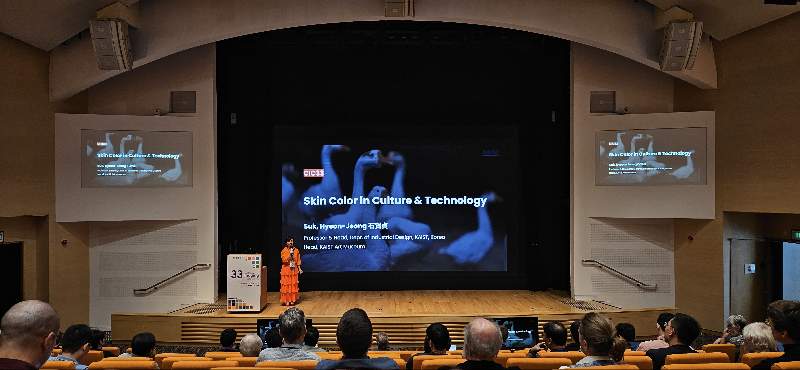At the 33rd Color and Imaging Conference (CIC33) held in Hong Kong, Professor Suk shared her long-standing research journey that explores the intersection of color science, human perception, and design practice. Her keynote, “Skin Color in Culture and Technology“, offered an integrative perspective on how color science can illuminate both cultural and technological aspects of human skin color.
During the talk, she introduced a series of studies and industry collaborations conducted at Color Lab over the past decade—ranging from psychophysical experiments on skin color perception to applied projects with global cosmetic brands. She discussed how these efforts have informed product development, digital color communication, and AI-based personalization in beauty industries. In particular, she presented recent collaborative projects with Color Lab’s industry partners, demonstrating how the digital transformation is reshaping both the measurement and meaning of skin color in the age of data-driven design.
Abstract
From an evolutionary perspective, human skin color has played a crucial role in signaling health status and enabling subtle emotional communication. Although human vision encompasses a wide range of colors, the spectrum of human skin lies along a relatively narrow pathway from dark brown to light beige. Within this pathway, even minor color differences carry significant perceptual weight—affecting impressions of attractiveness, social status, and cultural identity. These interpretations are never fixed; rather, they shift with time, culture, and social values.
Across Asia, for instance, lighter skin has historically been associated with higher social class and ideals of beauty. Yet today, trends are moving toward the expression of “authenticity,” where diversity in skin tones is increasingly embraced. Reflecting this, cosmetic brands now launch foundations in as few as 15 to as many as 200 shades, responding to individual desires for self-expression. Makeup, therefore, is not only about appearance but also about identity—an enduring human need.
Advances in color science and digital technology are accelerating this transformation. High-precision imaging, data analytics, and AI algorithms are enabling skin tone measurement and makeup recommendations beyond the limits of the human eye. Digital-first brands are pioneering services that personalize beauty through smartphones and online platforms. At the same time, fundamental questions remain: Is the ultimate value in capturing skin color as accurately as possible, or in presenting it in ways that resonate with self-perception and social context?
The mirror image, the face before a loved one, the presence on stage, the photo on social media, the digital twin in XR—each version of “me” calls for a different color of skin. How we choose to represent ourselves reveals both cultural narratives and technological possibilities, making skin color not only a matter of science, but also of meaning.
